One question I was asked to ask during my Japan trip was to see if “Quality Circles” are still active in Japanese companies. I think the term was brought to the U.S. in the 1980s and 1990s, but generally wasn't widely adopted for a number of reasons – probably due to management mindsets and organizational culture, not a lack of willingness on the part of American workers. At GM in 1995, people talked about failed attempts at forming QCs (and management mainly blamed the workers, sadly).
Toyota did not talk about Quality Circles, but they did talk about Kaizen as a core part of the Toyota Production System.
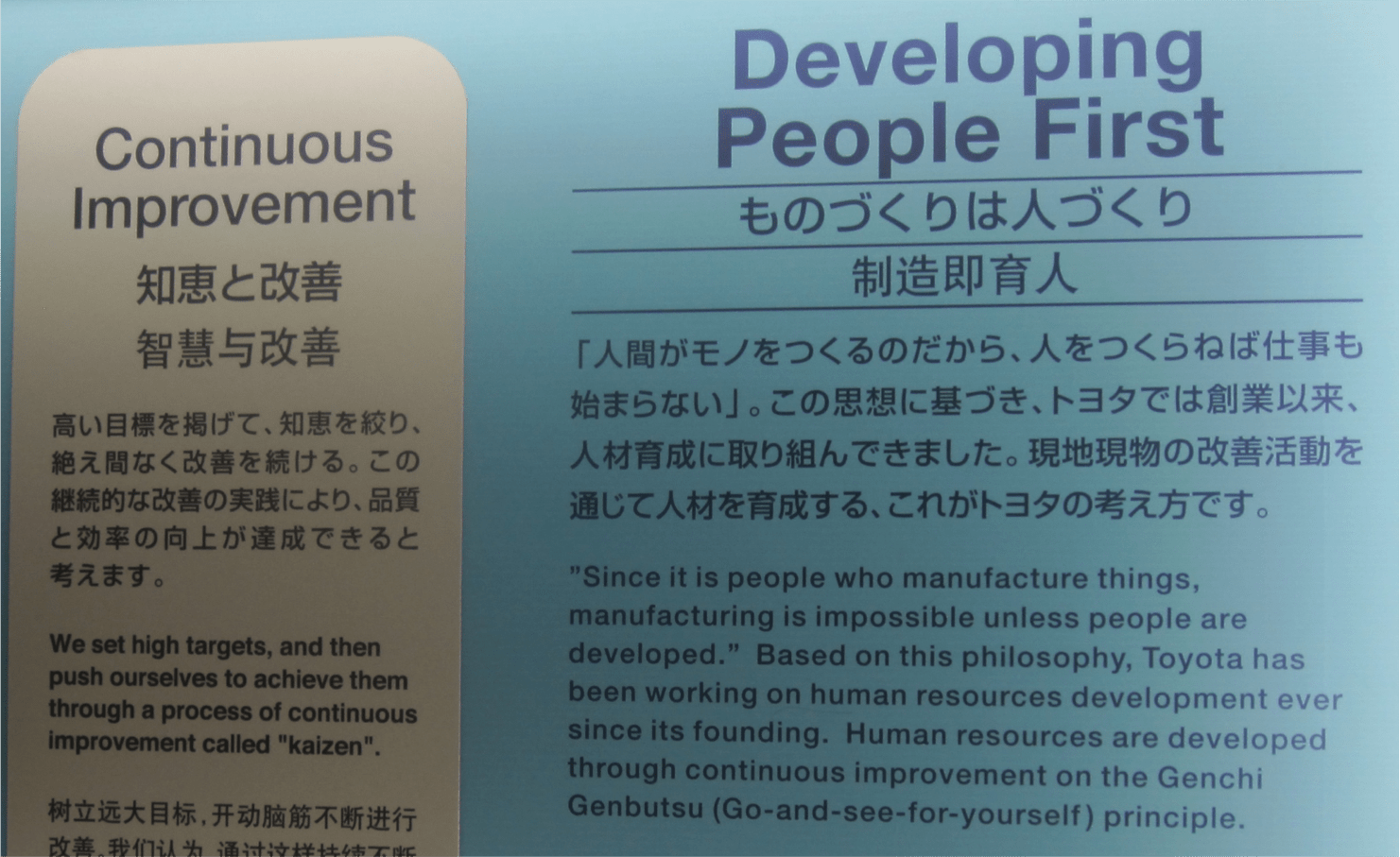
The two companies we visited on Tuesday and the hospital we saw on Wednesday all had very active Quality Circle programs that were driving improvement in many ways.
Each organization has a sequence or structure for the QC process – either eight or ten steps.
- Brainstorm problems
- Select a theme (from the brainstormed problems) and explain why you selected it
- Analyze the current state (and narrow the problem)
- Set goals
- Schedule the QC activities (over a six-month period)
- Root cause analysis
- Implement changes
- Check the effects
- Standardize and stabilize
- Identify the next QC project
The QC is a group of roughly six to eight people from a department. Different QC members will take responsibility for different steps in the process, with each person owning at least one step
At a high level, the QC process is PDSA – Plan, Do, Study, Adjust. The Deming Cycle (they still talk about Deming here).
While the QC teams presented their “QC Story” as a multi-slide PowerPoint deck, the thought process is very similar to what we might call “A3 Problem Solving” in the U.S. or other countries. The thought process and the steps are very similar, but an A3 is documented on a single sheet of paper.
The first company we visited on Tuesday, a complex, low-volume high-mix manufacturer, explained their goals for the QC activities… just as Toyota would say:
- First priority / goal of QC is training people to learn problem solving
- Second priority is the financial benefits
We heard the exact same philosophy at the hospital yesterday.
The theme of the manufacturer's QC activities is “QMM: Quality, Mission, Morale.” That's what they would like employees to focus on. They have 30 circles active at any given time (with about 350 employees). “All employees are in a circle.” Each circle has a manager who helps them and a QC advisor helping them when they meet formally with the advisor for a 30-minute meeting each month. The QC work continues between those meetings of course. The QC advisor is not in that role full time.
Later on Tuesday, we visited a food services company that runs cafeterias all across Japan. They presented one QC story that was focused on a nursing home in Osaka. The QC stories are a “bottom up activity” that included even part-time workers, working to improve the presentation and taste of blended “mixer food” for the elderly who can't eat solid food.
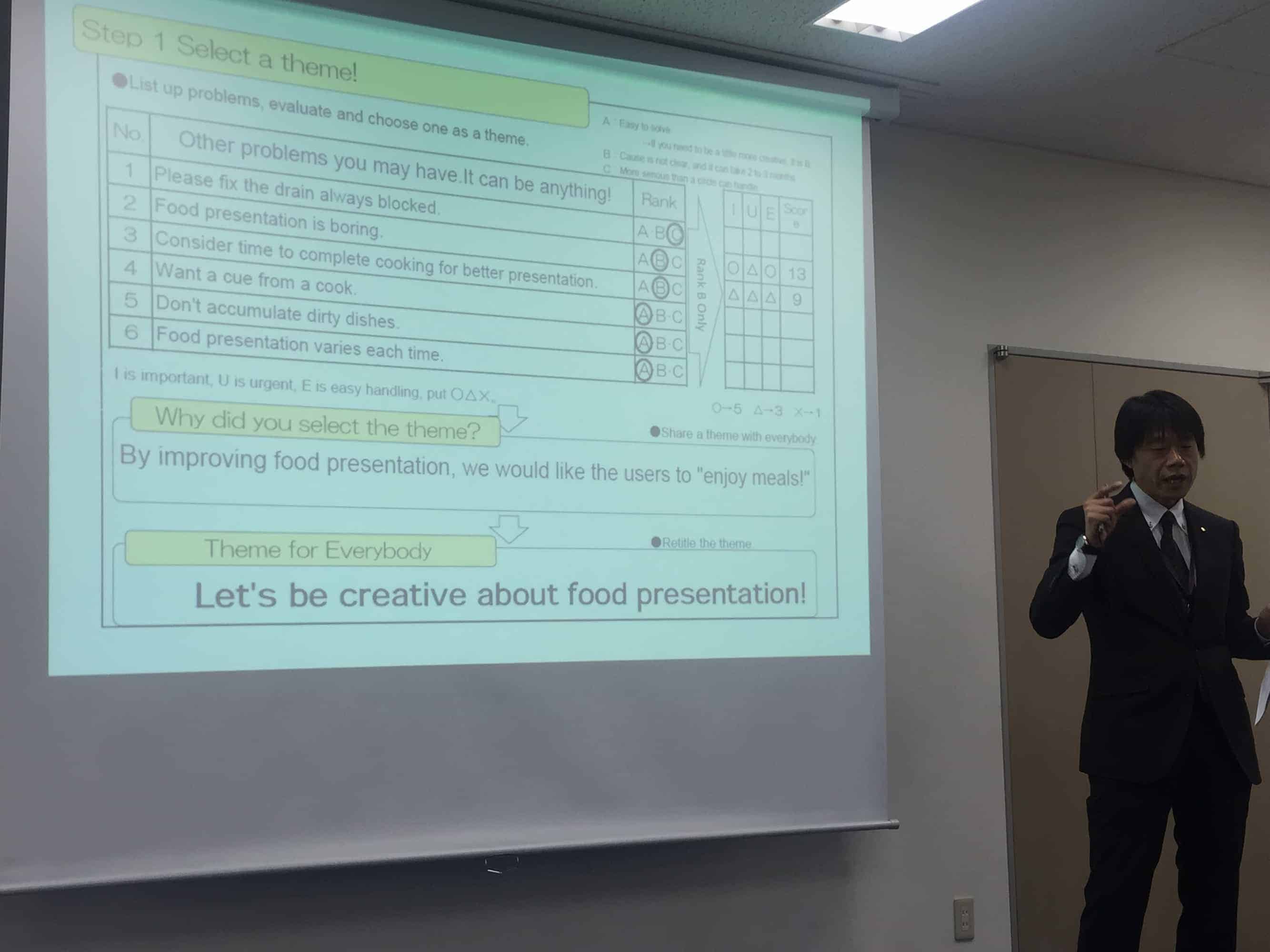
 The managing director explains the Quality Circle process
The managing director explains the Quality Circle processStep #9 in their 10-step method is to document the lessons learned. The managing director said “lessons learned is the most important item.” Again, that's a familiar theme – the focus on learning.
The QC activity there is “voluntary and autonomous” and is “not directed by the boss.”
With QC activities (and smaller Kaizen improvements), “Improvement has become the culture of the workplace… Kaizen is endless,” as the managing director said.”
The hospital we visited Wednesday presented three different QC stories:
- Improving home care plans of care
- Improving “rice jelly” food
- Reducing the overtime required to manage and administer medications
I love the fun and colorful graphics they use in their team names, themes, and presentations:
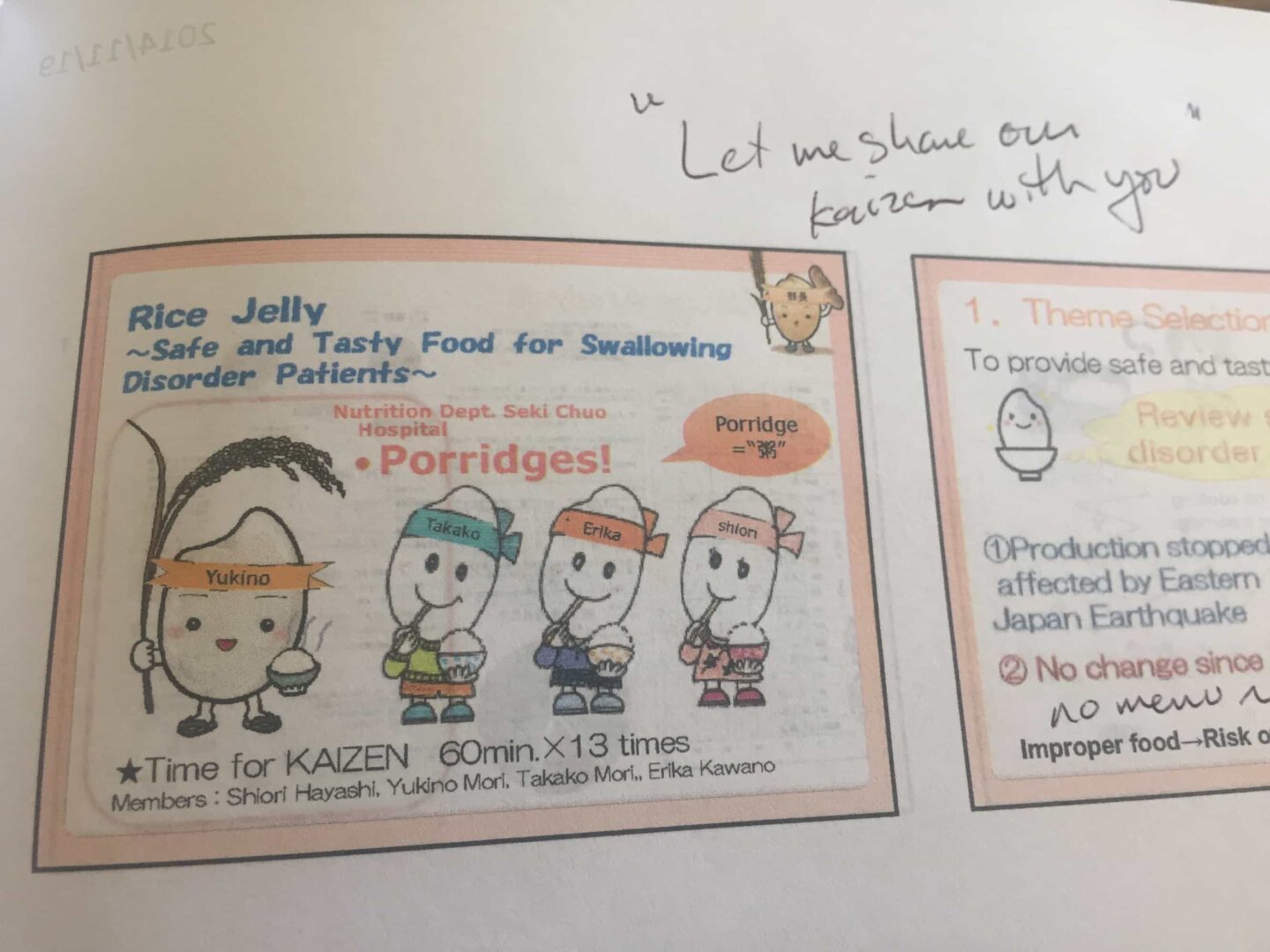
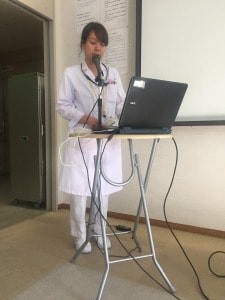
The hospital started the QC approach through TQM in 2004. The first Japanese hospital to do this was in 1985. The CEO of the hospital explained how he visited the United States, including the IHI, and learned about “Lean” as a term and a method. The hospital also has employees practicing smaller daily Kaizen improvements, which I'll write about soon.
The hospital has no full-time Quality staff or department and no full-time QC or Kaizen promotion staff. Quality is an activity for everybody to participate in.
We're off to see two more hospitals on Thursday and Friday. Whether we call it TQM or Lean, Quality Circles or A3s or PDSA, what matters is focusing on the customer and engaging everybody in never ending improvement.
Tweet of the Day
See more tweets from the tour.
Please scroll down (or click) to post a comment. Connect with me on LinkedIn.
Let’s work together to build a culture of continuous improvement and psychological safety. If you're a leader looking to create lasting change—not just projects—I help organizations:
- Engage people at all levels in sustainable improvement
- Shift from fear of mistakes to learning from them
- Apply Lean thinking in practical, people-centered ways
Interested in coaching or a keynote talk? Let’s start a conversation.




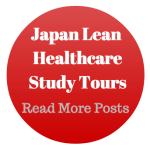





![When Was the Last Time a Leader Around You Admitted They Were Wrong? [Poll]](https://www.leanblog.org/wp-content/uploads/2025/07/Lean-Blog-Post-Cover-Image-2025-07-01T212509.843-100x75.jpg)
Quality Circles are also still alive in some companies in the US as well. As a matter of fact, as I am typing this I am working with a circle group team on improving a process at our company. Also, last week I had three teams at the Honda circle group conference. Quality Circle are a great way to develop associates to be problem solvers and it is so exciting to watch them develop and grow into the best that they can be. It is just great!!!
Great, glad to hear that Dale!
Yes, quality circles are great as long as what they do aligned with the corporate objectives… otherwise carrying out projects here and there will not add much value to the process excellence and bottom-line.
None of the companies or hospitals we visited in Japan seemed very concerned about QC activities being “aligned to corporate objectives.” They are delivering results, but they focus first on developing people and teaching problem solving through these activities. Learning first, results second.
What you’re describing, Uditha, is a very Western view and maybe that’s why many of our organizations struggle with Lean and Kaizen.
[…] improvement is important to me, of course. The Japanese hospitals we’ve visited have a strong tradition of practicing Total Quality Management. Some are now embracing Kaizen as “daily continuous improvement” in addition to their […]
[…] They are all practicing an evolution of Total Quality Management (many for 15 or 20 years). See my earlier post about quality circles still being alive and well in Japan. TQM often creates a great foundation for what we’d recognize as Lean practices or Lean […]
[…] Some organizations there have been dabbling with Lean methods. One talked about their years of experience with Total Quality Management and “Quality Circle” projects (as I had heard about in Japan). […]
[…] in Chongqing, that the hospital is doing “quality circle” improvement projects (as I saw in Japan), with everybody (or most everybody) being involved in […]
In my previous company, we nom it SGA (Small Group activities) have a Team leader, facilator and a coach (Leader), using RCA for routine pbs and Kobetsu Kaizen or 12 steps focused improvement tool for the chronic one, the objective is financial benefits, unfortunately the culture and engagement is not supporting these daily and continuous activities, Japanese have this kaizen culture in their DNA and blood,